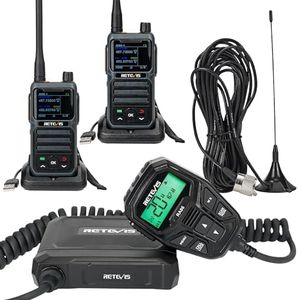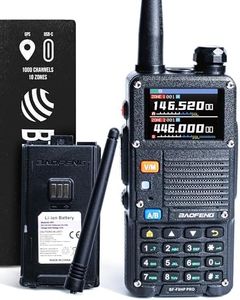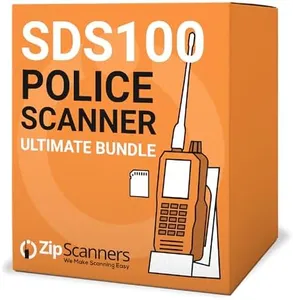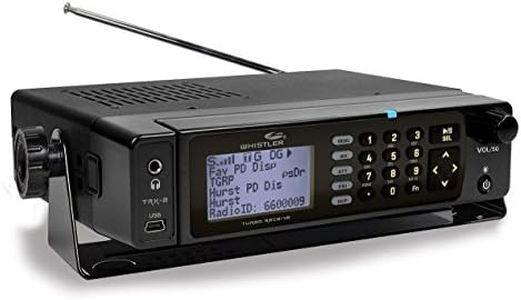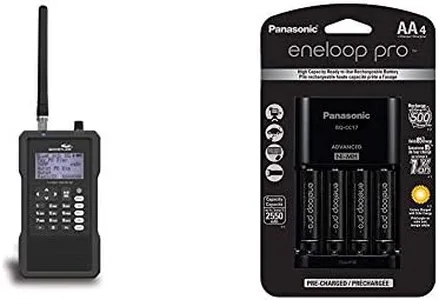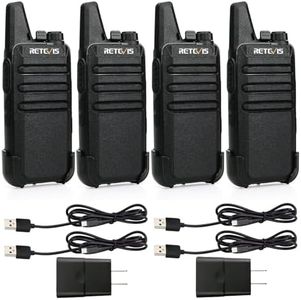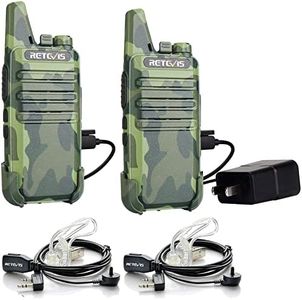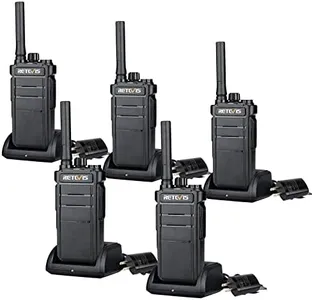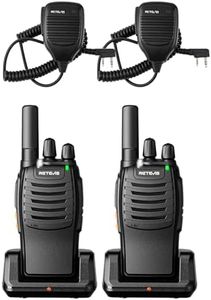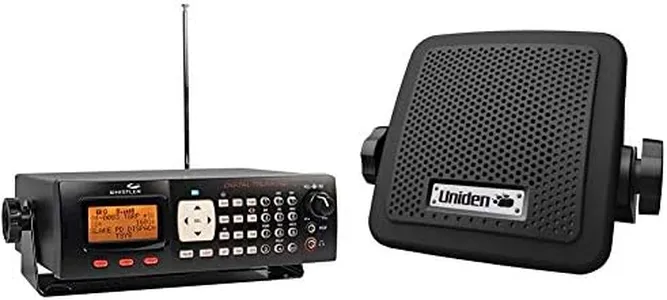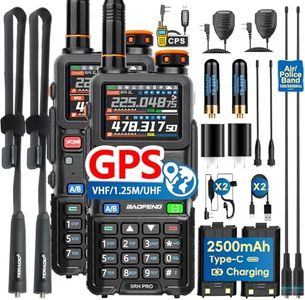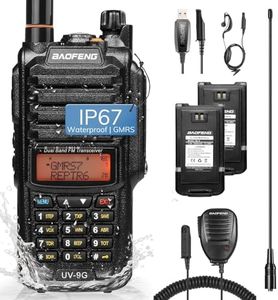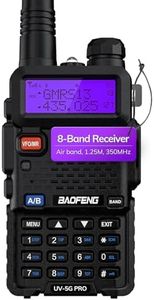10 Best Radio Scanners 2025 in the United States
Our technology thoroughly searches through the online shopping world, reviewing hundreds of sites. We then process and analyze this information, updating in real-time to bring you the latest top-rated products. This way, you always get the best and most current options available.

Our Top Picks
Winner
BAOFENG BF-F8HP PRO 10 W Tri-Band Two-Way Radio – UV-5R 7th Gen, 1000 Channels, GPS & NOAA Weather, Aviation/VHF/UHF/1.25 m Scanner, IP54 Rugged, USB-C Rechargeable Battery
Most important from
987 reviews
The BAOFENG BF-F8HP PRO is a versatile radio scanner well-suited for licensed amateur operators seeking extensive communication capabilities. Its tri-band functionality allows it to operate across VHF, UHF, and the 1.25M band, providing flexibility and broader communication options. With a robust 8W output on VHF/UHF and 5W on 1.25M, it ensures clear transmissions, making it a strong contender for users who need reliable communication across multiple bands.
For those interested in emergency preparedness, the BF-F8HP PRO is equipped with NOAA weather alerts and GPS capabilities, enabling users to stay informed about severe weather conditions and share location details easily. This feature makes it a handy tool for outdoor adventures or emergency situations.
The device supports up to 1000 channels, offering excellent channel memory and customizable zone management, allowing users to organize and monitor communications efficiently. However, non-trunking capability might limit its use in more complex communication networks. The inclusion of aviation reception at 108-136 MHz with AM modulation is a bonus for aviation enthusiasts, providing clear reception of airband communications. The radio's firmware is updatable, ensuring long-term value and adaptability to new features, which is a sustainable choice compared to purchasing new models frequently.
In terms of portability, the radio is relatively lightweight at 11 ounces, but its dimensions may be considered bulky for some users. The USB-C rechargeable battery is a modern touch, offering convenience for users on the go. The water resistance level (IP54) provides some protection against splashes and dust, but it may not withstand more challenging environmental conditions.
While it offers a range of advanced features for amateur radio operators, it may be overwhelming for beginners due to its complexity. The device has received positive feedback for its performance and support, and it comes with a one-year warranty for added peace of mind.
Most important from
987 reviews
Uniden SDS100 Ultimate Bundle | Expert Programming, Antenna, Stand, Screen Protectors, & Uniden SDS100 Police Scanner | Works Right Out The Box Programmed for Your Area
The Uniden SDS100 Ultimate Bundle is a well-regarded choice for anyone interested in radio scanners, particularly for those who want a straightforward experience right out of the box. One of the standout features is the expert programming included, which minimizes the complexity often associated with setting up police scanners. This is ideal for beginners or those who may feel intimidated by the technology. The ability to customize which areas you want to monitor, along with programming for all US states and counties, greatly enhances its appeal.
In terms of performance, the SDS100 has an extensive frequency range and is capable of scanning both digital and analog signals, making it versatile for varied communication needs. It's also equipped with trunking capability, which allows users to access more complicated radio systems used by emergency services. The scanning speed is generally fast, ensuring you won't miss important transmissions.
Portability is another strength; the scanner is battery-powered and compact, making it easy to take on the go. This could be especially beneficial for users who enjoy outdoor activities or need to monitor communications while traveling. The bundle includes a quality antenna and a stand, but it does require a bit of a learning curve even with expert programming. The display and interface can be overwhelming for some users, especially if they want to tweak settings beyond the initial programming. Additionally, the reliance on a single lithium-ion battery might be a drawback for users seeking longer operational times without needing to recharge.
Whistler WS1010 Analog Handheld Scanner – 400 Channels, Skywarn, Same Weather Alerts, Spectrum Sweeper, PC Programmable, Service Banks for Police, Fire, Marine, Air & Ham – Black
Most important from
1375 reviews
The Whistler WS1010 is a compact handheld analog scanner designed primarily for users interested in monitoring public safety, weather, marine, air, and ham radio frequencies. It offers a solid channel memory with storage for up to 400 frequencies across 10 banks, which is sufficient for most hobbyists or casual scanner users. The inclusion of Skywarn storm spotter functionality and SAME weather alerts makes it especially useful for those who want timely weather warnings. The spectrum sweeper feature is a helpful tool to quickly find active transmissions nearby.
While it does not support digital or trunked systems, which limits its use for scanning some modern police and emergency communications, it covers a broad range of analog modulation modes effectively. The scanner is lightweight and portable, running on 4 AA batteries and easy to carry outdoors. Its interface is fairly simple, with preprogrammed service banks to get users started without complex setup, and it can be programmed via PC for more advanced users, although this requires additional software and cables.
The scanning speed and interface might feel basic compared to more recent models. This makes the WS1010 a reliable and user-friendly analog scanner best suited for those focused on weather, marine, and traditional analog public safety channels, rather than advanced digital or trunking features.
